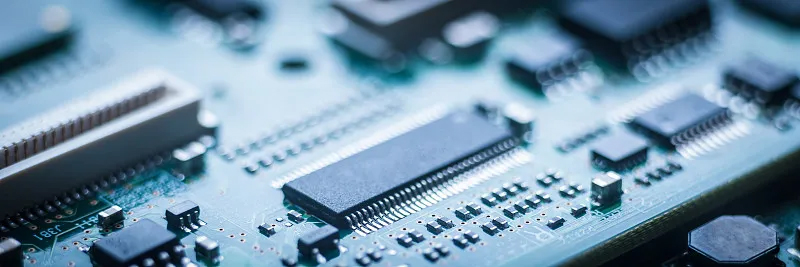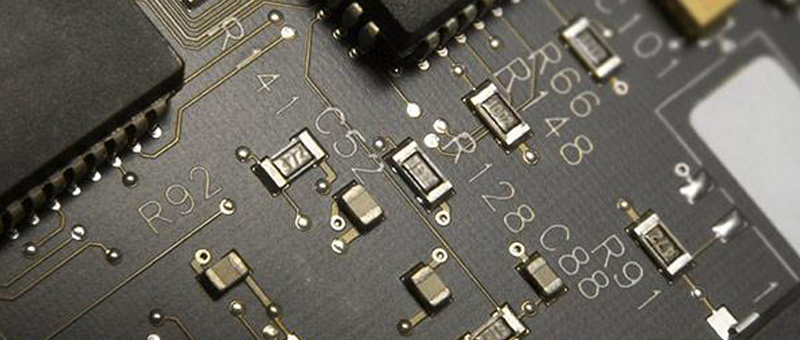Application of chip resistors in electronic devices
2024-08-27 03:04:13
Surface Resistor (SMD Resistor) is a surface mount technology, component of SMT, widely used in modern electronic devices. Unlike traditional leaded resistors, chip resistors are lead-free and can be soldered directly onto the surface of the circuit board.

1. Working principle of chip resistors:
The working principle of chip resistors is the same as conventional resistor devices, that is, the effect of resistance is created by limiting the current. When the current passes through the resistance of the chip, the current is limited and thus the voltage in the circuit decreases.
Chip resistors play an important role in modern electronic technology due to their small size, light weight, high precision, good stability and other characteristics. The main characteristics of chip resistance are as follows:
① Miniaturization: The shape of the chip resistor is rectangular, its length and width are usually only a few millimeters, and its thickness is also very thin. It has the characteristics of small size, light weight and high installation density, which can meet the requirements of modern electronic equipment for miniaturization and light weight.
② High precision: The precision of SMD resistance can reach 0.01%, 0.05%, 0.1%, 0.25%, etc., which meets the requirements of resistance precision in different application scenarios.
High-precision chip resistors can ensure the stability and reliability of the circuit and improve the operational efficiency of the equipment.
③ Good stability: The chip resistor is made of high-quality materials and advanced production technology, and has good stability. In high temperature, high humidity, high pressure and other environments, the performance will not change significantly and ensure the stable operation of the circuit.
④ Good heat dissipation performance: Although the chip resistance is small in size, its heat dissipation area is relatively large and has good heat dissipation performance. When used in high-power circuits, it can effectively dissipate heat and prevent circuit damage caused by excessive temperature.
⑤ Easy installation and maintenance:
SMD resistors do not require complicated installation steps, they just need to be directly soldered on the surface of the circuit board, so it is very convenient to install, replace and maintain.
Because of their excellent properties, SMD resistors are used in almost all areas of electronic equipment that require circuit regulation and control. The main application ranges of SMD resistors are as follows:
circuit application:
①Current limitation:
When connected in series in a circuit, SMD resistors can be used to limit the current flowing through the circuit to prevent excessive current from damaging other components.
②Voltage division:
In a resistor voltage divider circuit, SMD resistors work together with other resistors to change the voltage value at a certain point in the circuit according to Ohm's law to provide the appropriate working voltage for various electronic components.

③ Signal conditioning:
It is used for signal attenuation, gain control, bias adjustment, etc. to ensure that the signal is in the proper range and improve the signal quality.
④Filter function:
Combined with capacitors to form an RC filter, used to filter out AC noise or stabilize DC voltage in a circuit to improve signal stability and purity.
⑤ Time and frequency response:
In an RC circuit, the RC time constant, consisting of SMD resistors and capacitors, determines the speed of response and frequency characteristics of the circuit.
⑥ Matching network: In RF and microwave circuits, SMD resistors are used to create matching networks, adjust circuit impedance, achieve efficient signal transmission, and reduce reflections.
⑦ Temperature compensation: resistors with specific temperature coefficients can be used to compensate the performance deviation of other components in the circuit due to temperature changes.
⑧ Power dissipation: It can be used as a load resistor to consume extra energy and prevent circuit overload.
⑨ Logic threshold adjustment: In digital circuits, SMD resistors can be combined with capacitors, transistors and other components to adjust the logic threshold voltage.
⑩ Protection function: In some circuits, SMD resistors can be used as overcurrent and overheat protection components. When the current or temperature exceeds a predetermined value, the circuit is cut off by heating or melting the resistor itself to protect other devices.
Field of electronic equipment:
①Mobile communication devices such as smartphones, tablets and laptops. These devices use a large number of on-chip resistors for current regulation, signal processing, and power control
②Communication equipment such as routers and switches, base station equipment, Wi-Fi modules, Bluetooth devices
③Medical equipment such as monitor, ultrasonic equipment, blood sugar measurement and sphygmomanometer
④Industrial control systems such as PLC (programmable logic controller), sensor interfaces and automation equipment
⑤Car electronic engine control unit (ECU), audio and video processing and other in-car entertainment systems, ABS (anti-lock braking system), ESP (electronic stability program) and other safety systems
⑥Computers and data storage such as motherboard, hard disk and SSD, graphic card. From motherboards to various interface cards, chip resistors are used in circuit design to limit current, divide voltage, filter, and more.
⑦Home appliances such as TV, refrigerator and washing machine. Chip resistors ensure the stability and safety of circuits in the circuit systems of these devices